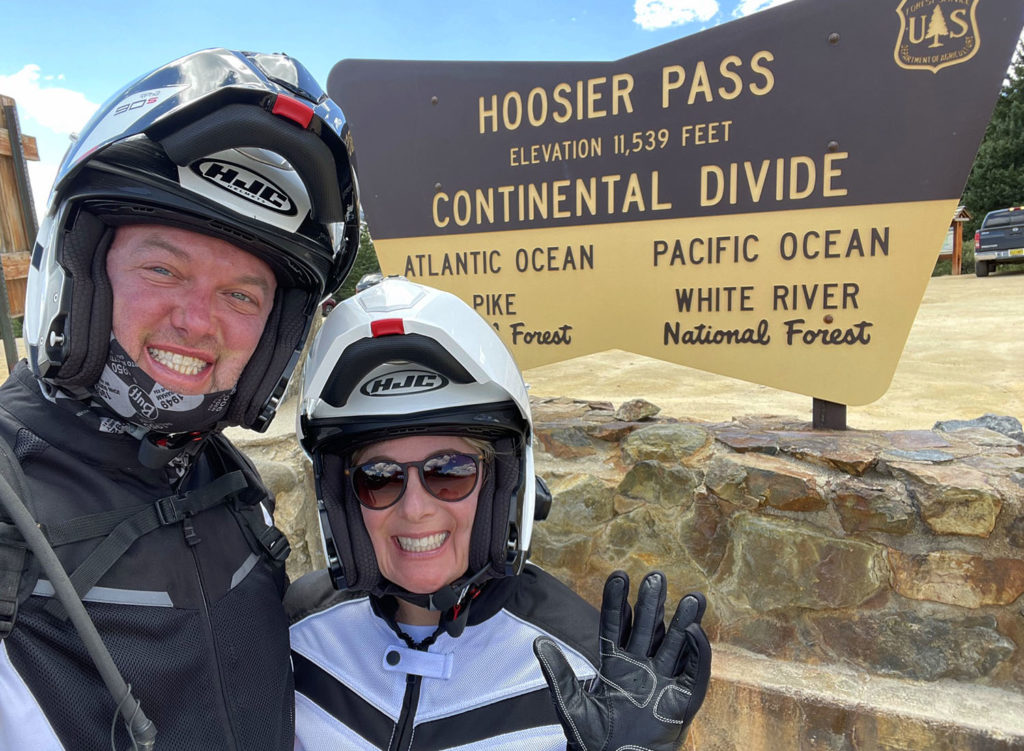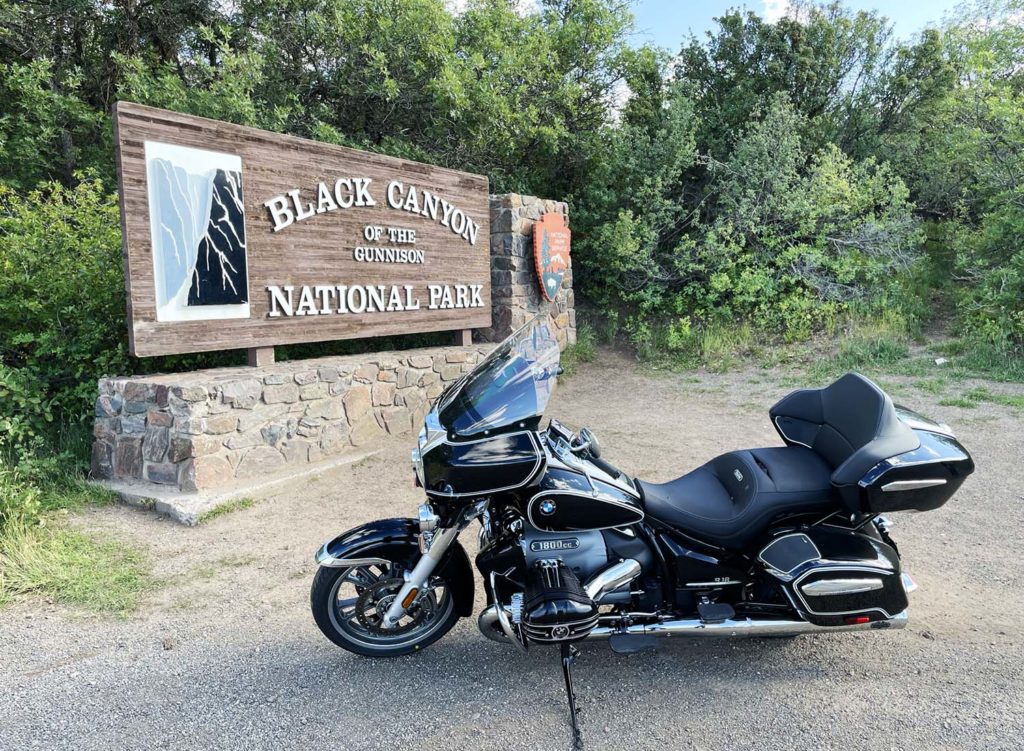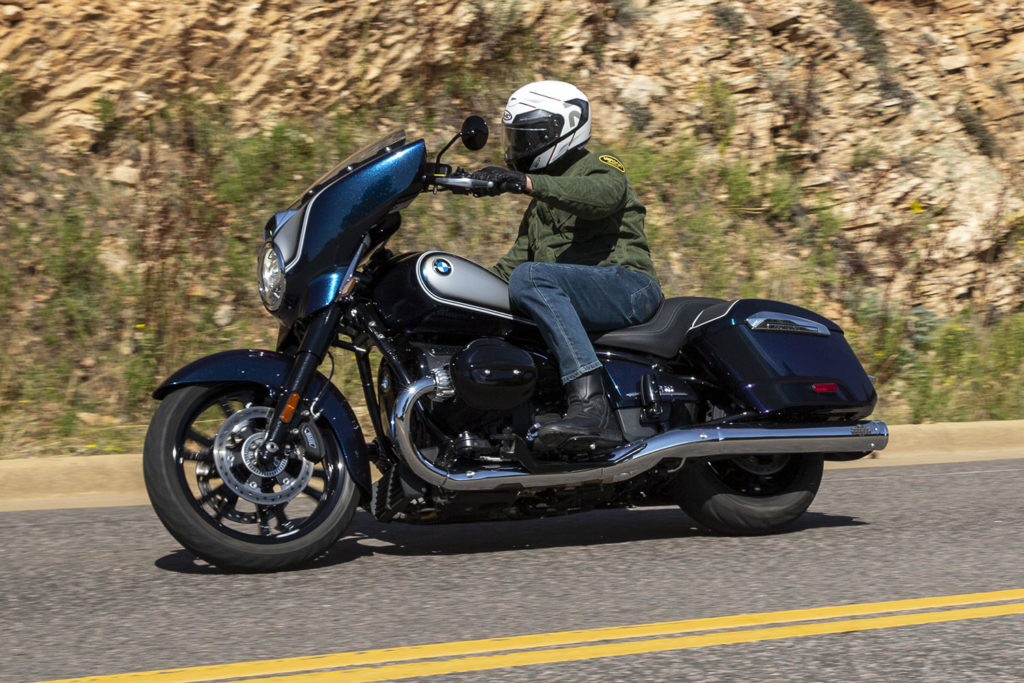
Last year, amid a global pandemic, BMW Motorrad introduced a motorcycle that is a very big deal for the company. With the introduction of the R 18, BMW entered the traditional cruiser segment, a distinctly American category that has long been dominated by Harley-Davidson.
Just as Harley-Davidson is known for V-Twins, BMW is known for horizontally opposed Twins called “boxers.” To compete in the world of heavyweight cruisers, there’s no replacement for displacement. BMW created what it calls the “Big Boxer” that displaces 1,802cc, or 110 cubic inches – much larger than the 1,254cc boxer in most of BMW’s R-series models like the R 1250 RT.
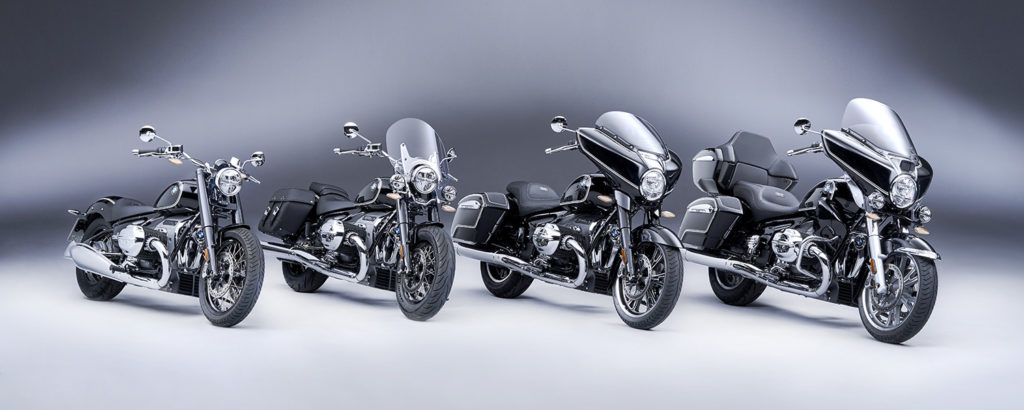
Soon after the standard R 18 came the R 18 Classic, which is equipped with a windshield and semi-soft saddlebags. For 2022, BMW has further expanded the lineup with two touring models, the R 18 B and R 18 Transcontinental. Both are equipped with a fork-mounted fairing, a full infotainment system, hard saddlebags, and other amenities. The Transcontinental also has a top trunk with an integrated passenger backrest.
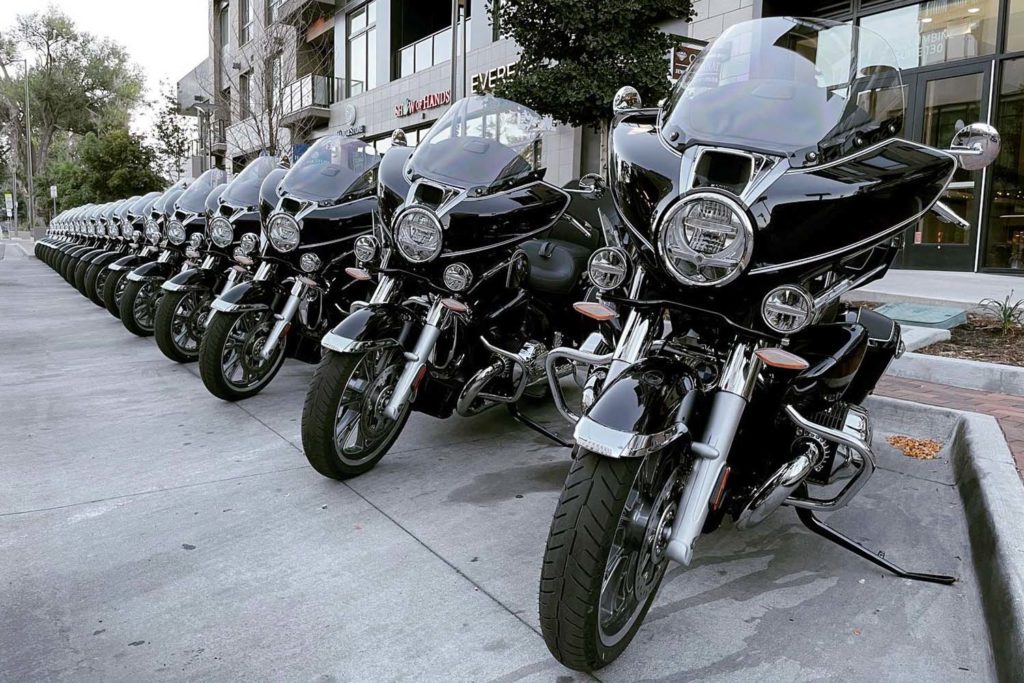
BMW invited Rider to ride both models at their U.S. press launch in Denver, Colorado. And after the one-day press ride, I spent four days riding an R 18 Transcontinental (TC) more than 1,500 miles through five states with my wife as a passenger and the luggage packed full of gear.
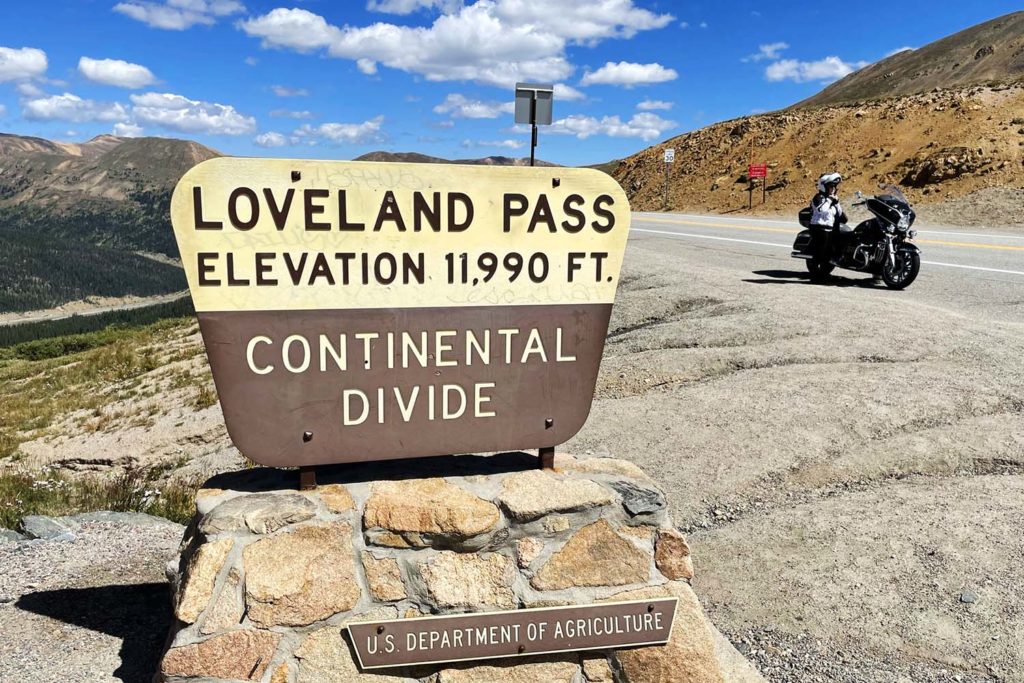
We’ll have an in-depth road test review soon. Here are our top 10 highlights of the new bikes.
1. They Rock better than they Roll
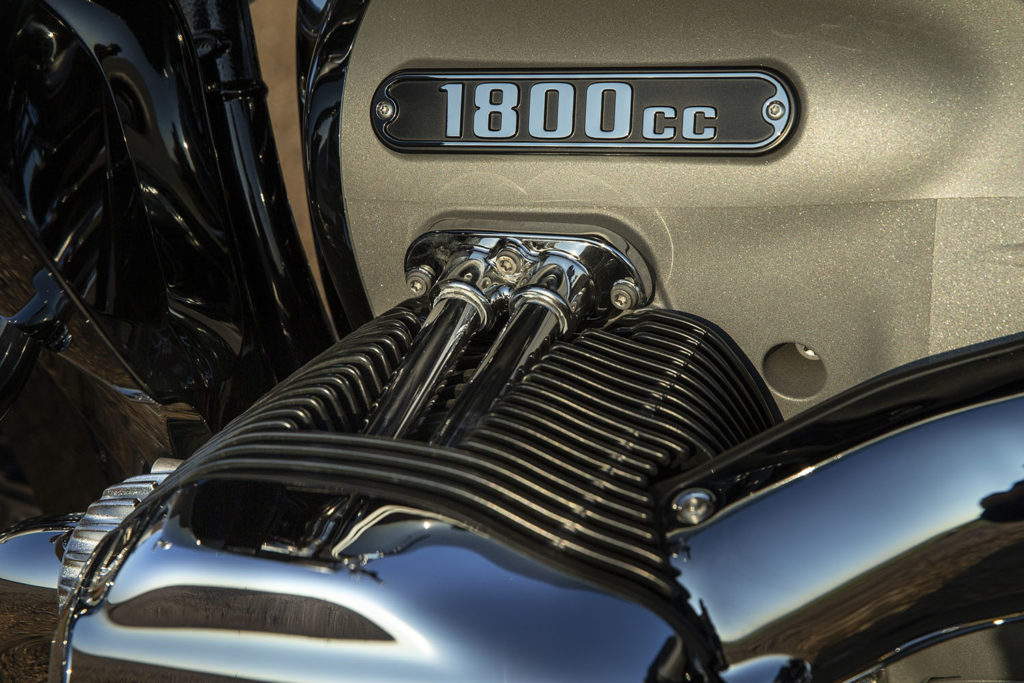
BMW’s “Big Boxer” makes a claimed 91 horsepower and 116 lb-ft of torque at the crank. When we put the R 18 on Jett Tuning’s dyno late last year, its shaft-driven rear wheel spun the heavy drum to the tune of 80 horsepower at 4,500 rpm and 109 lb-ft of torque at 2,900 rpm, which is about what you’d expect after accounting for power loss through the drivetrain.
The R 18s have three ride modes – Rock, Roll, and Rain – that alter throttle response, idle character, engine-drag torque control, and traction control intervention. In Rock mode, the R 18s feel lumpy and shake a lot at idle, and their throttle response is direct. But in Roll and Rain mode the bikes feel dull and lifeless, like a middle-aged couple nodding off at an AC/DC concert.
2. Who doesn’t like big jugs?
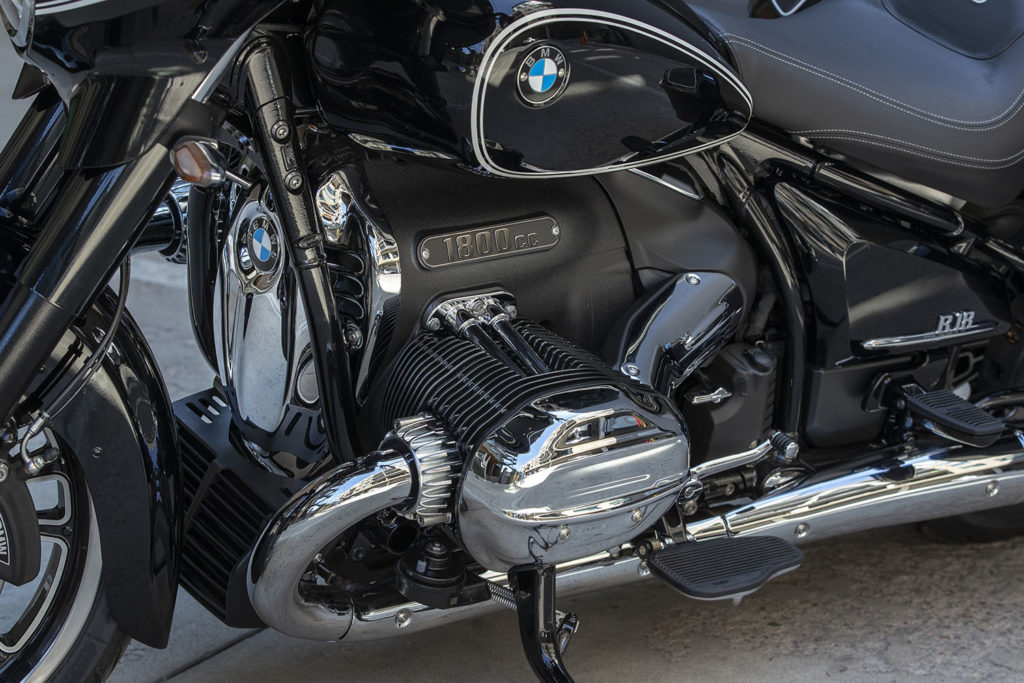
Ahem. Get your mind out of the gutter. We’re talking about cylinders here. With 901cc jugs sticking out of both sides of the bike, there’s no getting around the size of those things. They are a distinctive styling element, with prominent cooling fins and chrome pushrod tubes.
Even on really hot days – when riding across northern Arizona and southern Nevada, Carrie and I dealt with temps ranging from the high 90s to 113 degrees – the cylinders don’t put out excessive heat felt by the rider and passenger, nor do the exhaust pipes. But they do trap the rider’s legs behind the cylinders, limiting options to stretch out during long stints in the saddle.
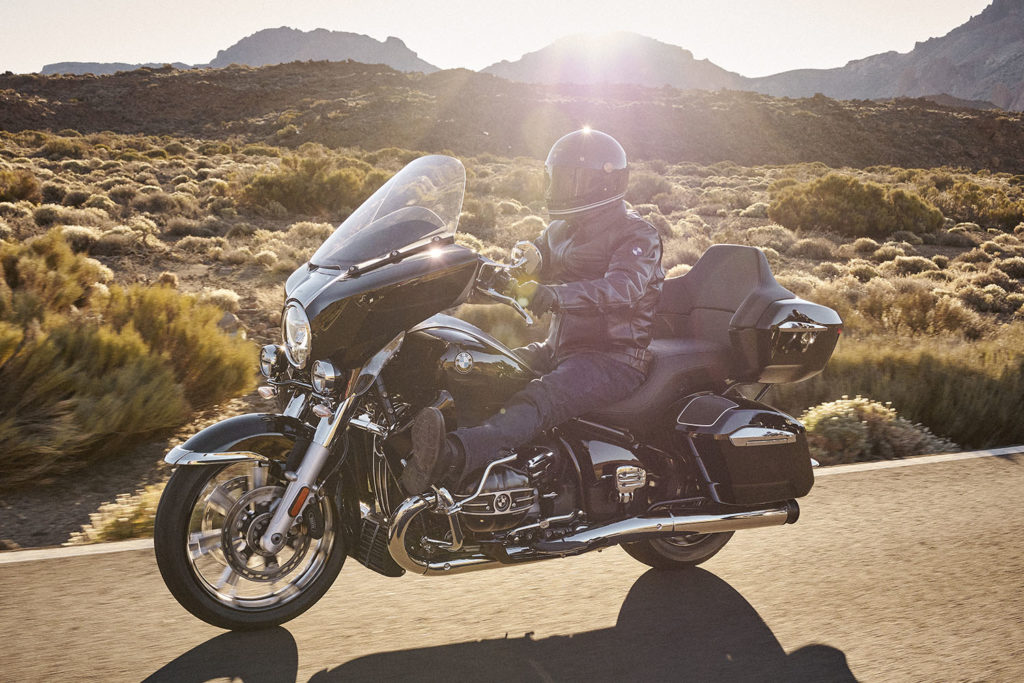
The cylinders are too wide for highway pegs, so BMW offers accessory chrome-plated leg rests so riders can stretch their stems with calves atop the cylinders, as shown in the photo above. The leg rests weren’t available on the press ride or our ride-away. I tried resting my jean-clad legs atop the cylinders, but that lasted about half a second because those big jugs get hot to the touch. The TC has highway bars in front of the cylinders and my legs are long enough that I was able to put my heels on them and mostly straighten out my knees.
3. Leave the riding to us
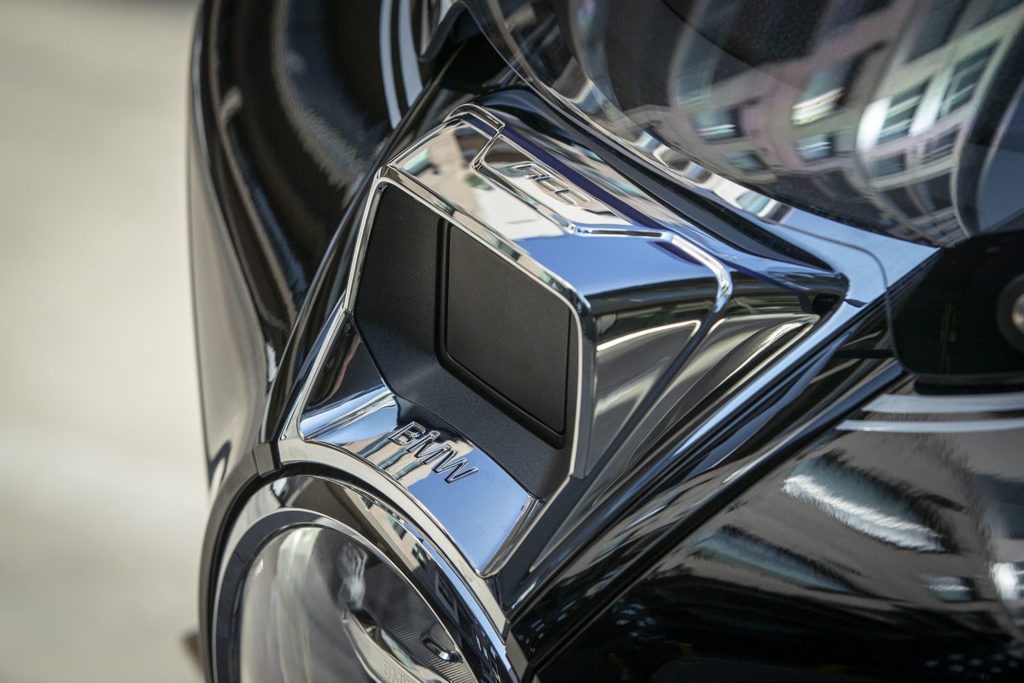
Thanks to the proliferation of throttle-by-wire, cruise control has become a common feature on all sorts of motorcycles, even sportbikes. It’s especially helpful on long, multi-day rides when even moderate tension in the rider’s arm while maintaining steady throttle can lead to sore wrists and achy shoulders.
On the R 18 B and Transcontinental, BMW takes things a step further with optional Active Cruise Control (ACC). Embedded in their front fairings are radar sensors that scan the lane in front of the bike when cruise control is activated. If a vehicle is detected in front of the bike, the system will automatically reduce speed to maintain a fixed distance (both speed and distance are adjustable). Using inputs from the lean-angle sensors, ACC will also adjust speed to assist with safer cornering.
ACC works really well, and it isn’t affected by vehicles in adjacent lanes. This is one of those features you don’t think you need or want until you use it.
4. My, what a big TFT you have!
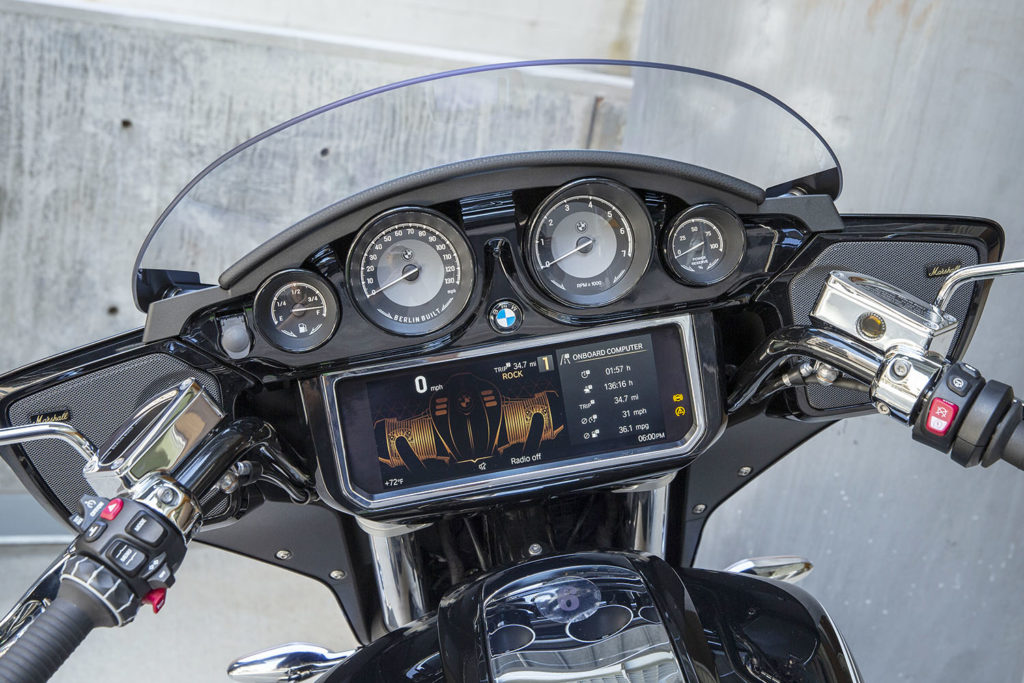
Most premium motorcycles are equipped with TFT (thin film transistor) instrument displays that offer nearly infinite variation for graphics, color, animation, etc. BMW has offered TFTs on some of its models for several years, but none approach the size of the TFT embedded in the fairing on the R 18 B/TC. It measures 10.25 inches on the diagonal, which is at least a couple of inches more than the largest TFT we’ve seen on other bikes. The thing is like a billboard, and its default background is a copper-colored illustration of the Big Boxer.
Using BMW’s proprietary Multi-Controller wheel on the left grip, navigating through menus is a breeze and keeps the number of buttons to a minimum. But, unlike the Indian’s Ride Command system, the hardened, glare-resistant glass screen isn’t touch-enabled.
5. If it’s too loud, you’re too old
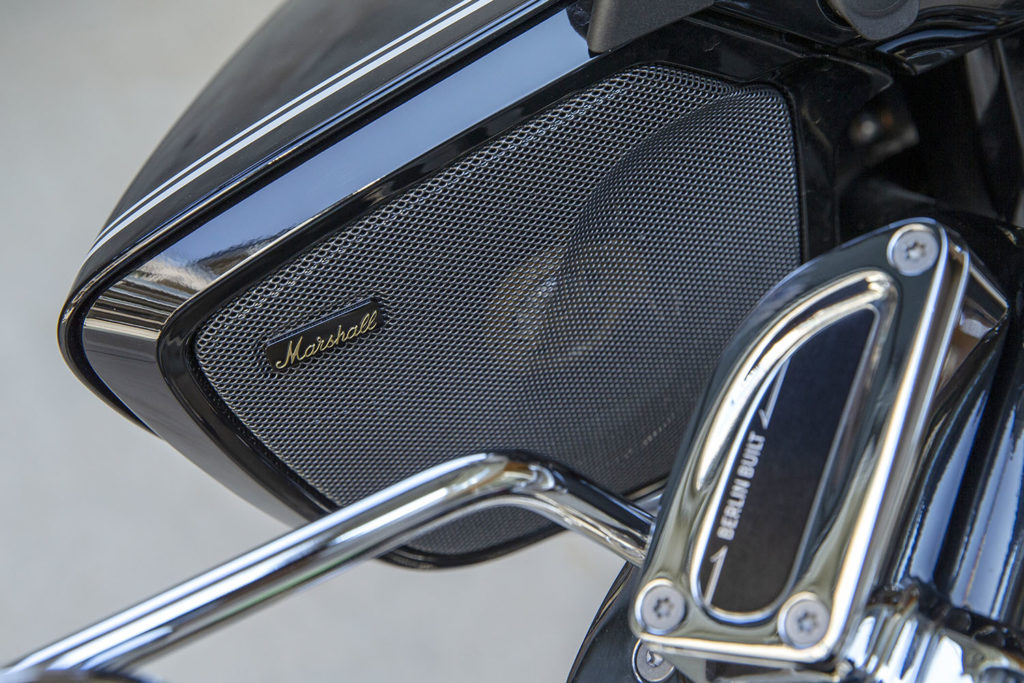
If you’ve seen amps on stages or stood next to huge stacks at a rock concert, then you’re familiar with the cursive script of the Marshall logo. In the movie “Spinal Tap,” there’s even a Marshall amp that goes to 11. BMW partnered with Marshall to create an audio system for the R 18 B and TC, and it rocks.
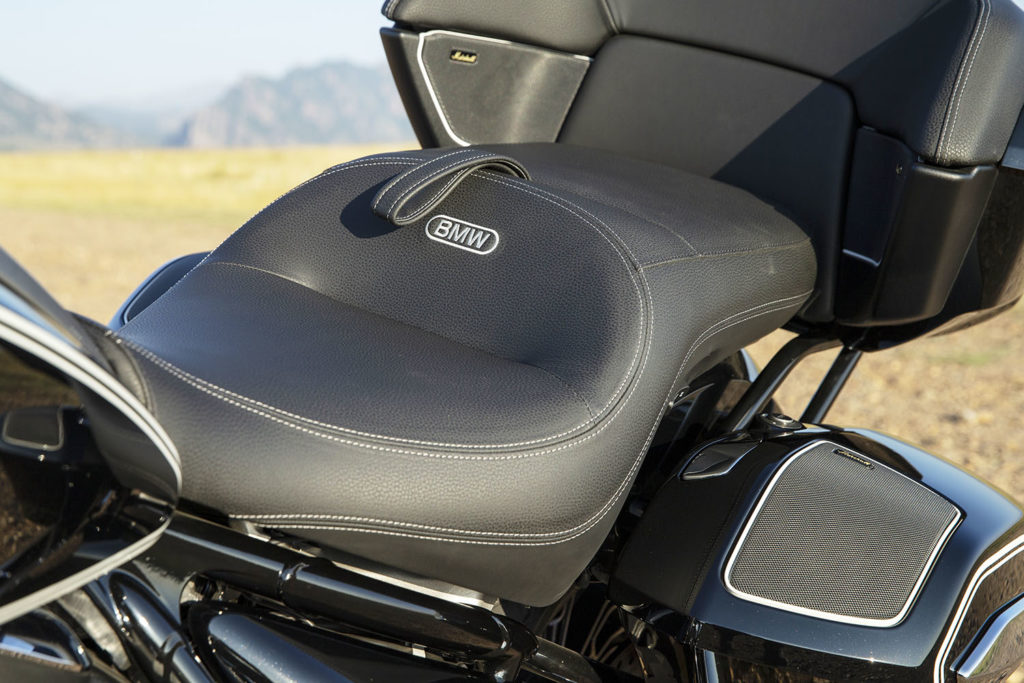
The standard setup has two 25-watt speakers embedded in the front fairing. The Premium Package on the R 18 B upgrades to the Marshall Gold Series Stage 1, which adds two 90-watt subwoofers in the lids of the top-loading saddlebags (eliminating half a liter of storage capacity) and brings total output up to 230 watts. The Premium-equipped R 18 TC gets the Marshall Gold Series Stage 2, which adds yet another pair of 25-watt speakers to the passenger backrest, for a total of 280 watts.
6. Get out of my way
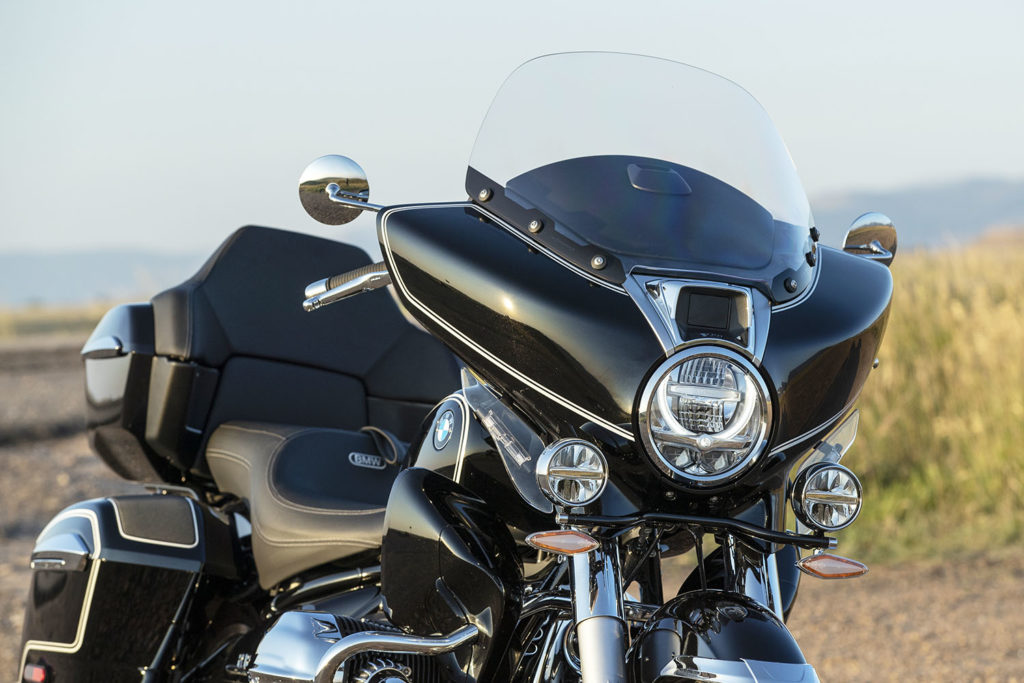
To complement the classic lines of the R 18, the fork-mounted fairing has a streamliner shape that tapers at the sides, providing wind protection for the rider’s hands. There’s a single round headlight that uses LEDs for low and high beams, and there’s an optional Adaptive Turning Light that swivels +/- 35 degrees to illuminate the inside of curves during cornering.
The fairing parts the wind smoothly, though airflow over the R 18 B’s short windscreen hits the rider’s helmet while airflow over the R 18 TC’s tall windscreen goes over the rider’s head. During our multi-day ride, my wife said she enjoyed the calm pocket of air and never dealt with helmet buffeting like she has on some touring bikes.
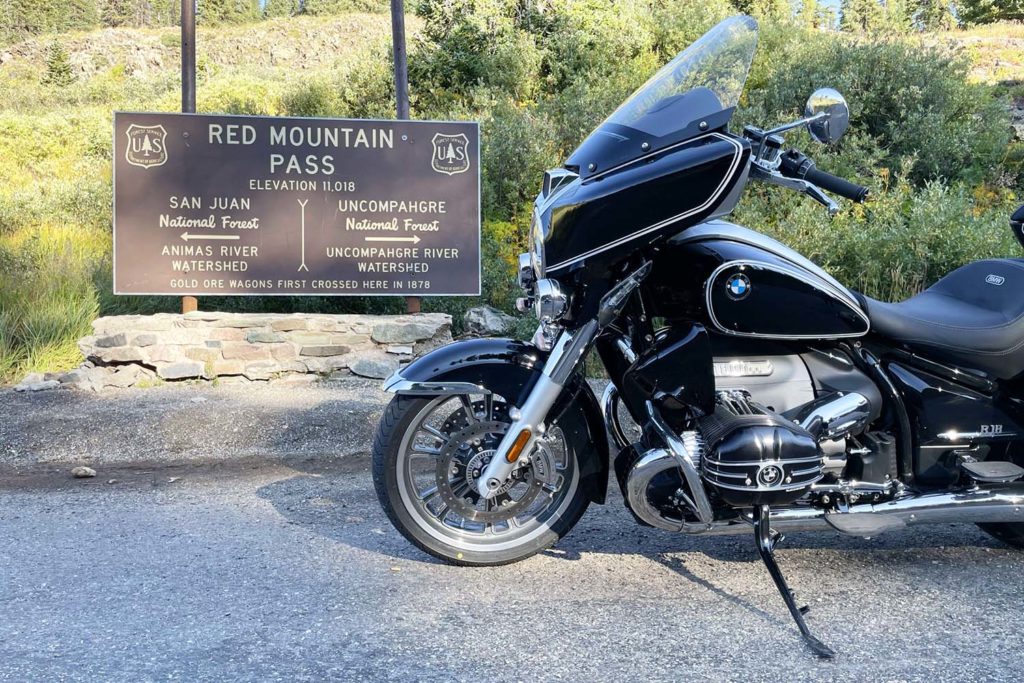
Neither windscreen offers height adjustment, which is disappointing, especially on such premium machines. The top edge of the TC’s screen was right in my line of sight, which was distracting during back-and-forth cornering in the Rocky Mountains. While the tall screen provided welcome protection from cold wind when temps dropped into the 40s on Colorado’s Million Dollar Highway (U.S. Route 550), I wished I could lower it when the mercury rose into triple digits several hours later in northern Arizona.
7. Galaxy Dust metallic would have made Prince jealous
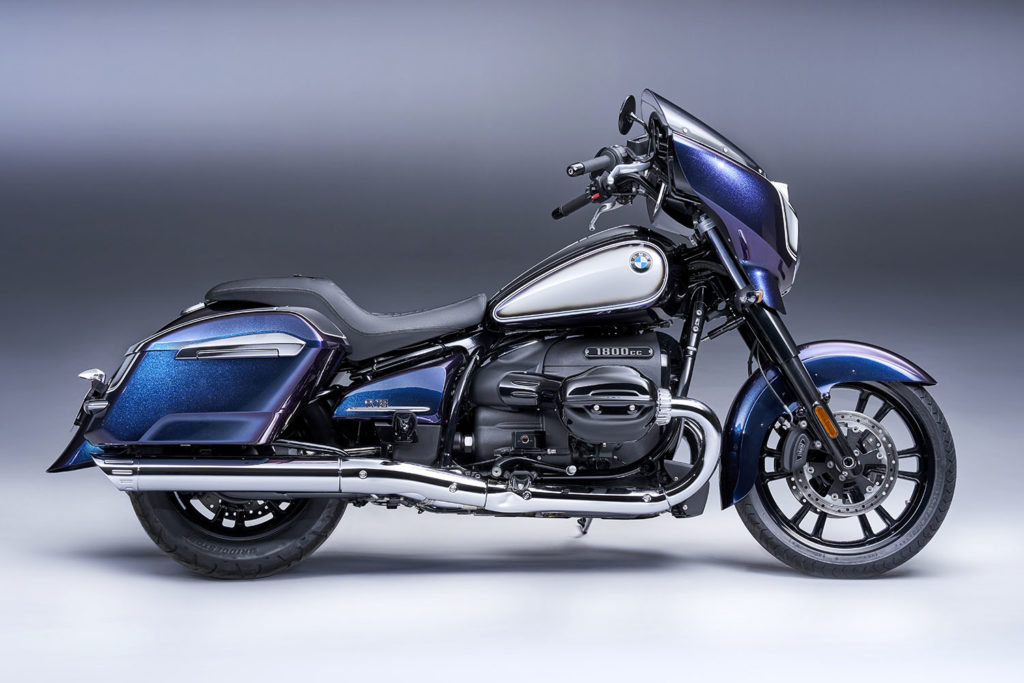
Offering an iridescent paint scheme that changes from purple to blue depending on how the light hits it seems a little out there for BMW. And in the studio photos, it looks garish. But in person Galaxy Dust metallic it looks undeniably cool, and the color variations are more subtle than the photos suggest. The colors are darker, the metal flake really pops in bright sunlight, and the Titanium Silver 2 metallic on the gas tank and fairing adds nice contrast.
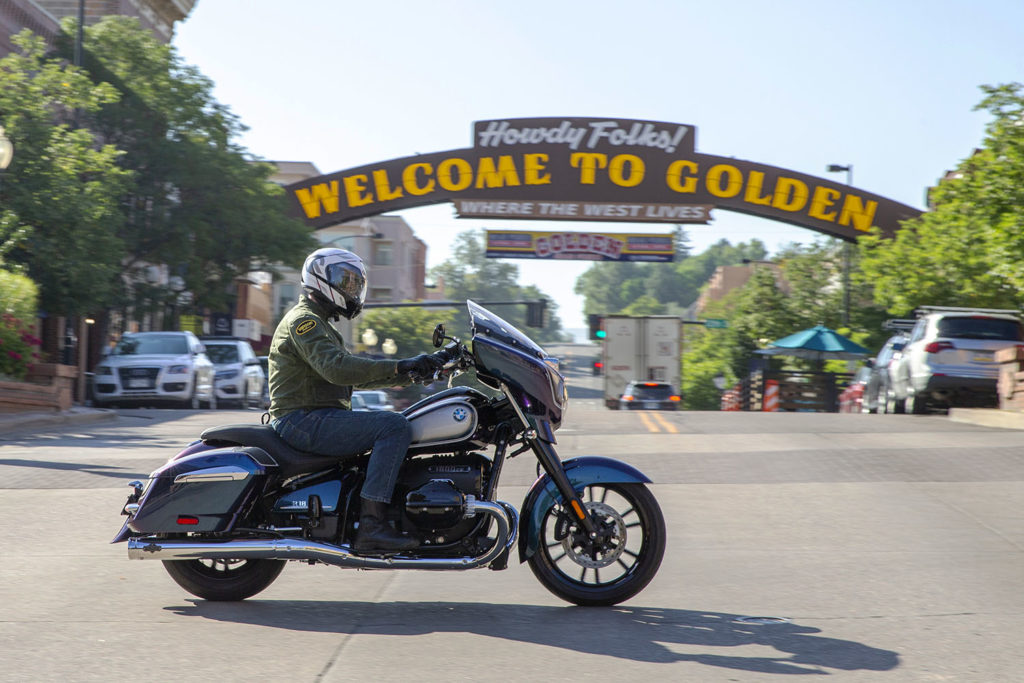
Such a unique, factory-custom paint job doesn’t come cheap. It will set you back $2,400.
If it were possible to make a sequel to “Purple Rain,” an R 18 B in Galaxy Dust metallic / Titanium Silver 2 metallic with a custom his-and-hers seat and sissy bar would be Prince’s motorcycle of choice.
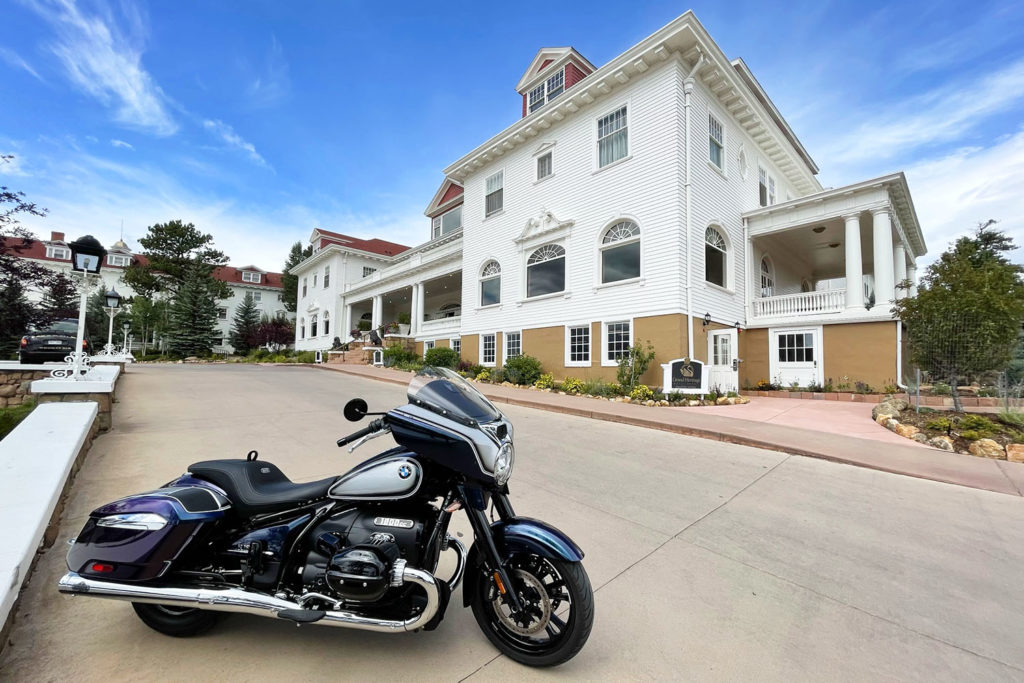
8. Two peas in a pod
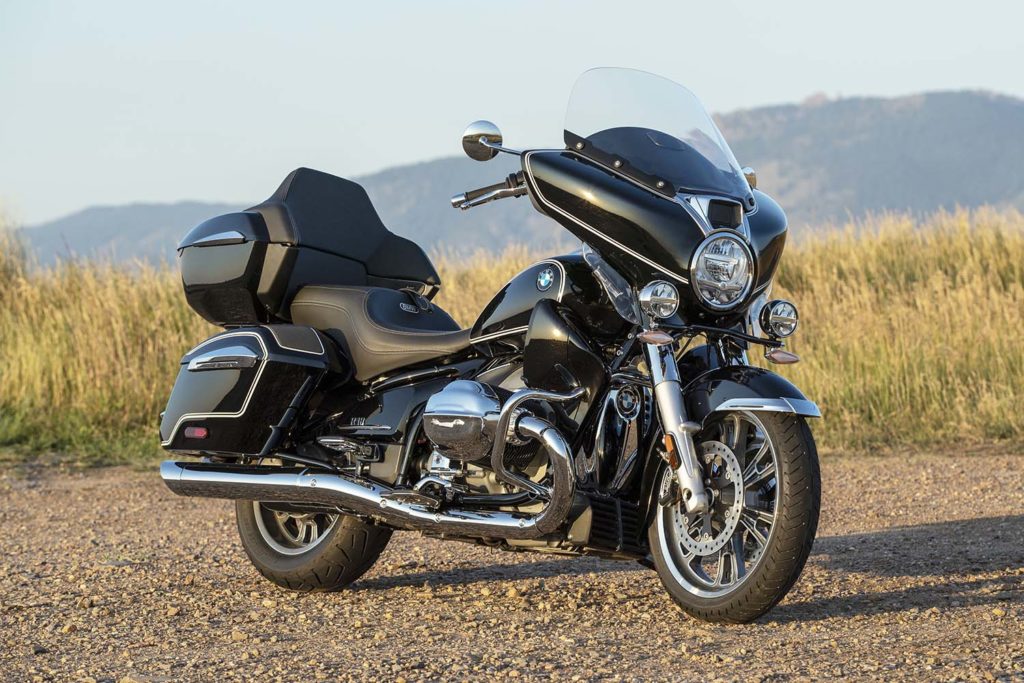
For long-haul touring motorcycles, rider and passenger comfort is critically important. Carrie and I rode more than 1,500 miles on the R 18 Transcontinental over four days, averaging nearly 400 miles per day. Except for the final day on I-15 through the Mojave Desert, we logged most of our miles on scenic roads full of hairpins, high-mountain passes, and steep grades.
As mentioned above, the cylinders of the Big Boxer limited my ability to move my legs around during long stints in the saddle. But the seat and riding position were comfortable, and the footboards allowed me to move my feet around to adjust the position of my hips and knees.
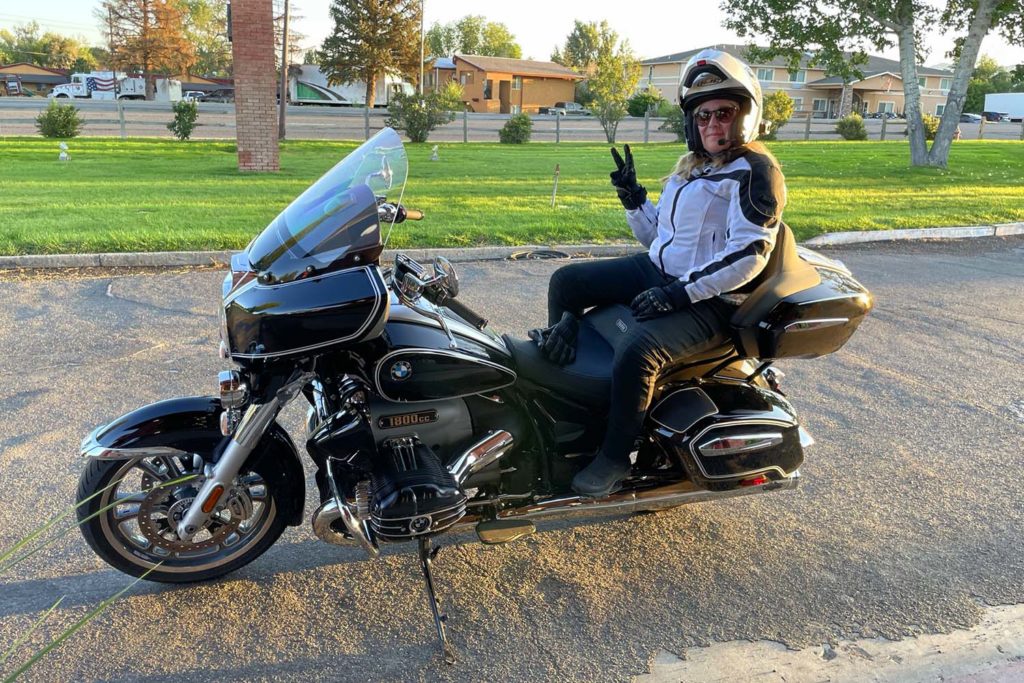
Carrie’s first-ever ride on a motorcycle was on a Honda Gold Wing back in 2009, and she’s measured every passenger seat and backrest since against that experience. With a low rider seat height of 29.1 inches on the TC and a passenger seat just a few inches higher, Carrie, who has short legs, found it easy to climb on and off the bike, aided in part by the passenger footboards. And once aboard, she found the seat to be all-day, day-after-day comfortable and the wrap-around backrest to be reassuring.
9. A place for my stuff
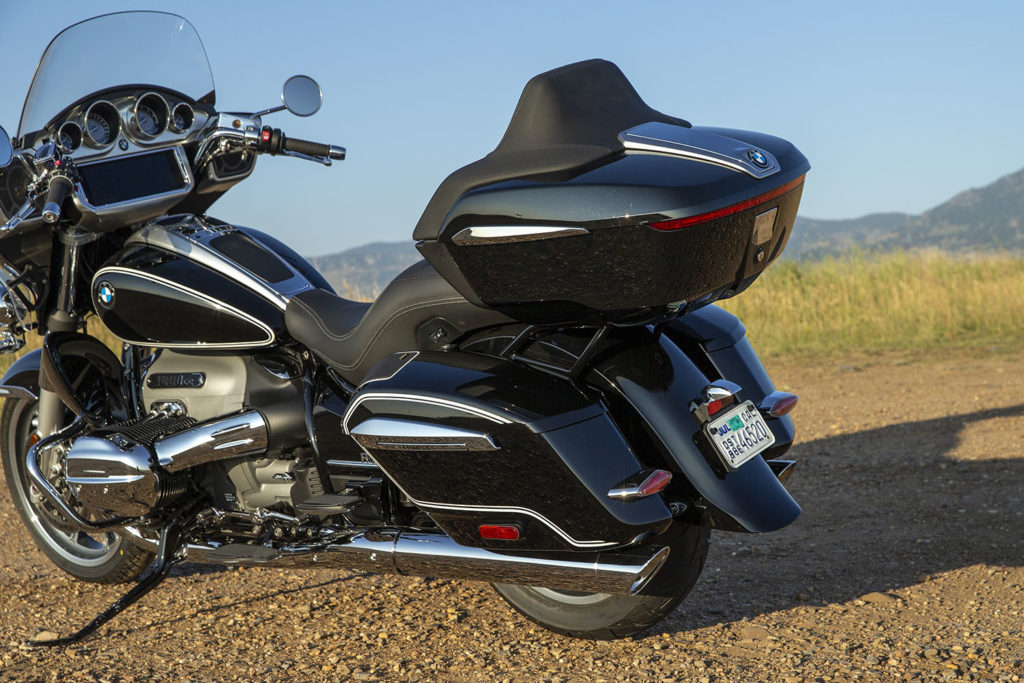
As George Carlin once said, “That’s all you need in life, a little place for your stuff.”
The top-loading saddlebags on the R 18 B and TC offer 27 liters of storage each, or 26.5 liters with the Marshall subwoofers installed in the lids. Styling-wise, the bags look great. Function-wise, they are fairly narrow, which presents some challenges with packing (BMW offers accessory drop-in liner bags that should make the process easier). But they open and close easily, with pop-up levers and central locks. The top trunk on the TC holds 48 liters (47 liters with optional audio), and it is spacious and easy to open/close/latch even when filled to the brim.
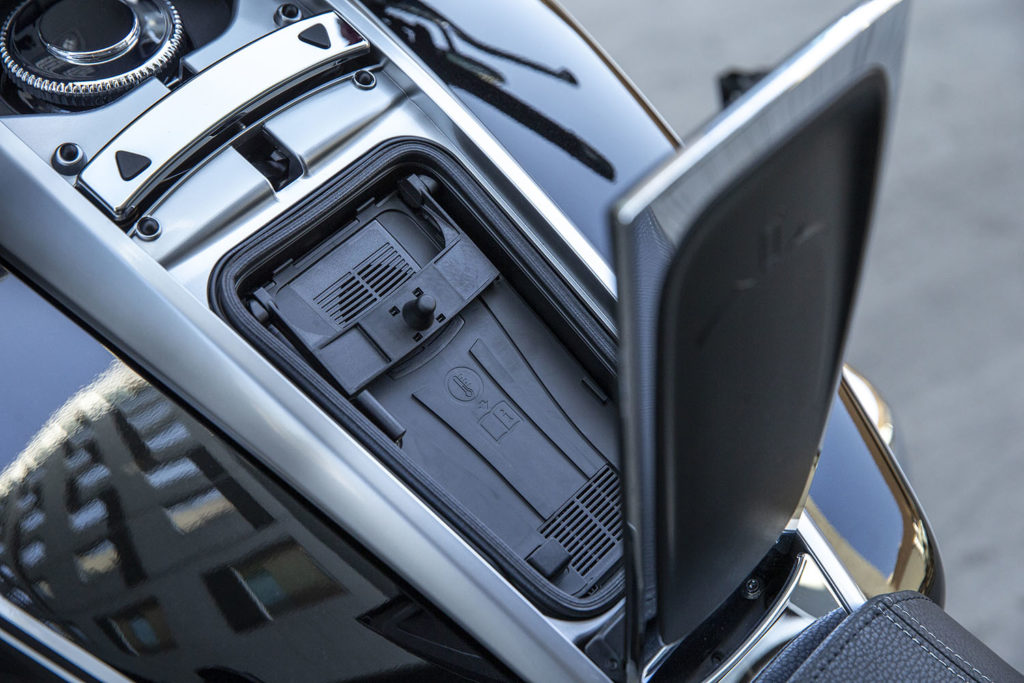
In the top of the 6.3-gallon fuel tank is a waterproof compartment for a smartphone. There’s a USB socket or charging and connecting the phone to the bike (navigation is provided via the free BMW Connected app). And since smartphones get hot, the compartment is ventilated with an electric fan. But the smartphone compartment does not lock, so riders must remember to take their phones with them when they park their bike. How else would you check Instagram?
10. Heavy is as heavy does
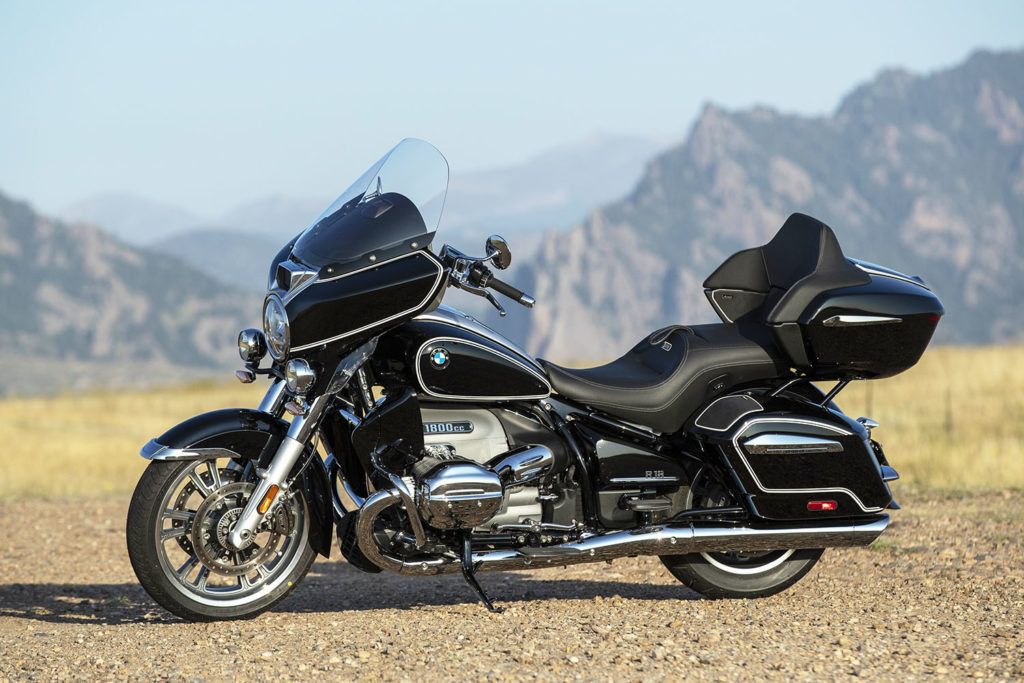
Heavyweight cruisers come by that description honestly. The 2021 Indian Roadmaster Limited we tested weighed 895 pounds. The 2020 Harley-Davidson Road Glide Limited we tested weighed 922 pounds. The 2022 BMW R 18 B weighs 877 pounds and the R 18 Transcontinental weighs 941 pounds, and that’s before you add the Premium Package and other options/accessories. Part of that major poundage comes from the Big Boxer and its 6-speed gearbox, which weighs 244 pounds – about 35 pounds more than a Honda Grom.
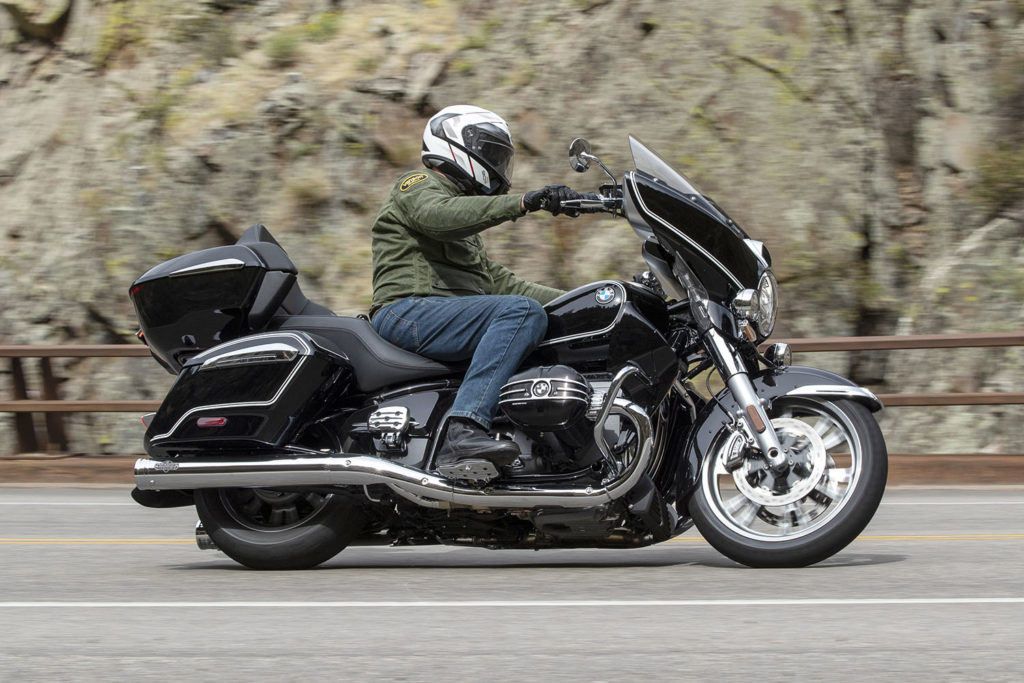
Greg’s Gear:
Helmet: HJC RPHA 90S
Jacket: Vanson Stormer
Gloves: Highway 21 Trigger
Pants: Fly Racing Resistance Jeans
Boots: Sidi Gavia Gore-Tex
BMW beefed up the R 18 frame to accommodate the added weight of the fairing, saddlebags, and trunk. Total permitted weight is 1,389 pounds, which translates to a load capacity of 512 pounds on the R 18 B and 448 pounds on the R 18 Transcontinental. Compared to the standard R 18, the B and TC also have a shorter wheelbase (66.7 inches, down from 68.1) and sharper rake (27.3 degrees, down from 32.7 degrees) but more trail (7.2 inches, up from 5.9). Even though the B and TC are heavier, they handle better.
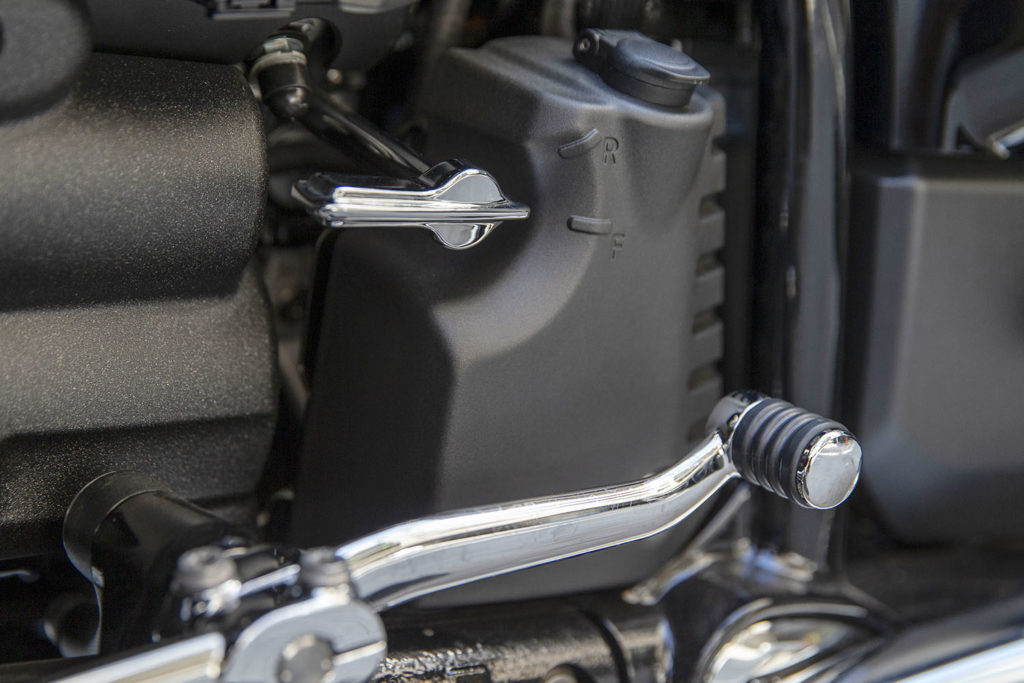
Like most touring bikes, you mostly notice the weight when you lift it off the sidestand or move it around a parking lot or garage. Fortunately, our test bike has the optional reverse gear installed, which helped when moving the bike around on an incline. Out on the road, the heavy bikes trundle along just fine. And when the road gets windy, they handle well within the limits of other heavyweight touring cruisers.
We’ll post our full review soon, so stay tuned!
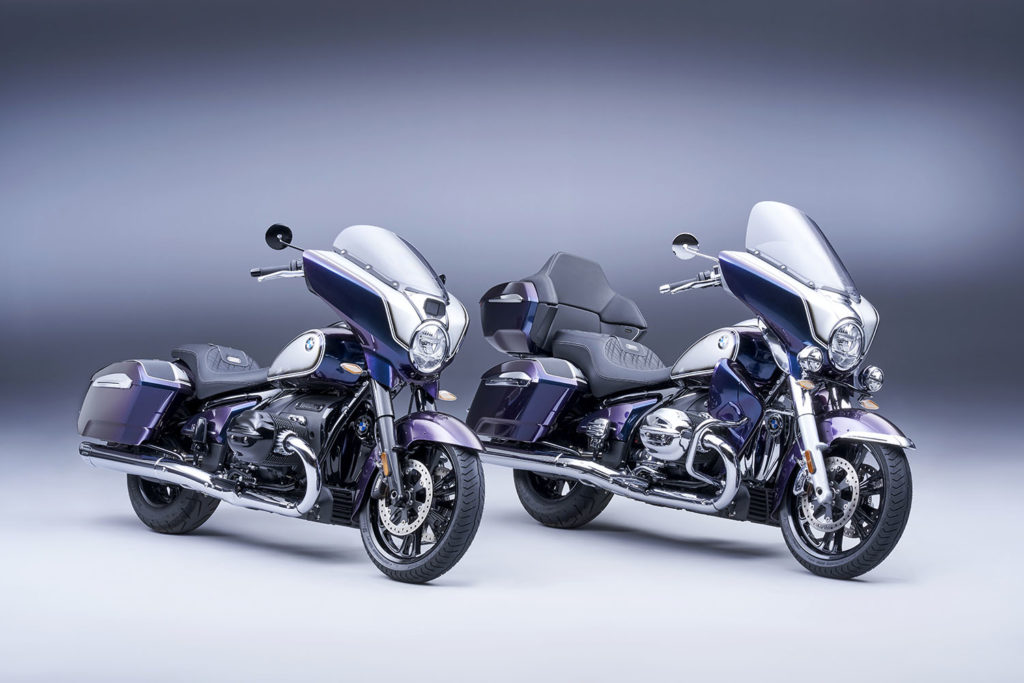
2022 BMW R 18 / R 18 Transcontinental Specs
Base Price: $21,945 / $24,995
Price as Tested: $29,065 / $31,695
Website: bmwmotorcycles.com
Engine Type: Air/oil-cooled, longitudinal opposed flat Twin, OHV w/ 4 valves per cyl.
Displacement: 1,802cc (110ci)
Bore x Stroke: 107.1 x 100.0mm
Horsepower: 91 hp @ 4,750 rpm (claimed, at the crank)
Torque: 116 lb-ft @ 3,000 rpm (claimed, at the crank)
Transmission: 6-speed, hydraulically actuated single-plate dry slipper clutch
Final Drive: Shaft
Wheelbase: 66.7 in.
Rake/Trail: 27.3 degrees/7.2 in.
Seat Height: 28.3 in. / 29.1 in.
Wet Weight: 877 lbs. / 941 lbs. (base models)
Fuel Capacity: 6.3 gals.
Fuel Consumption: 42.5 mpg (R 18 Transcontinental, as tested)
Estimated Range: 268 miles (R 18 Transcontinental, as tested)
The post 2022 BMW R 18 B and R 18 Transcontinental | Top 10 Review first appeared on Rider Magazine.
Source: RiderMagazine.com

